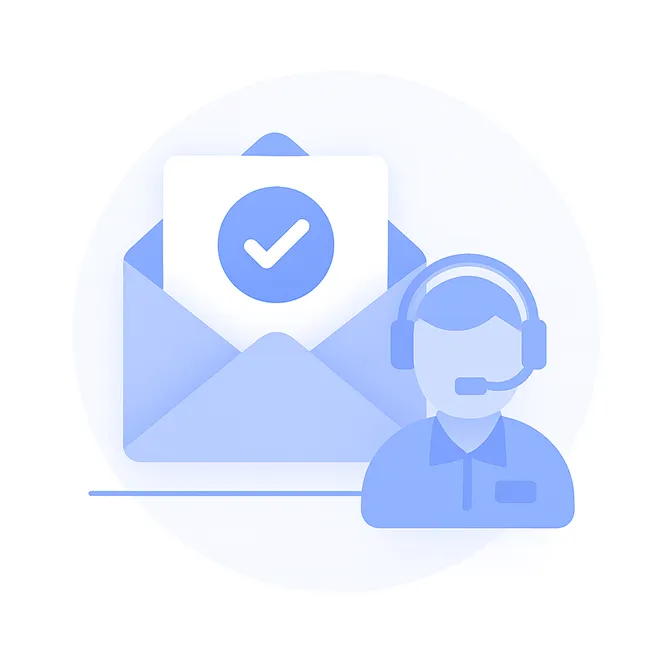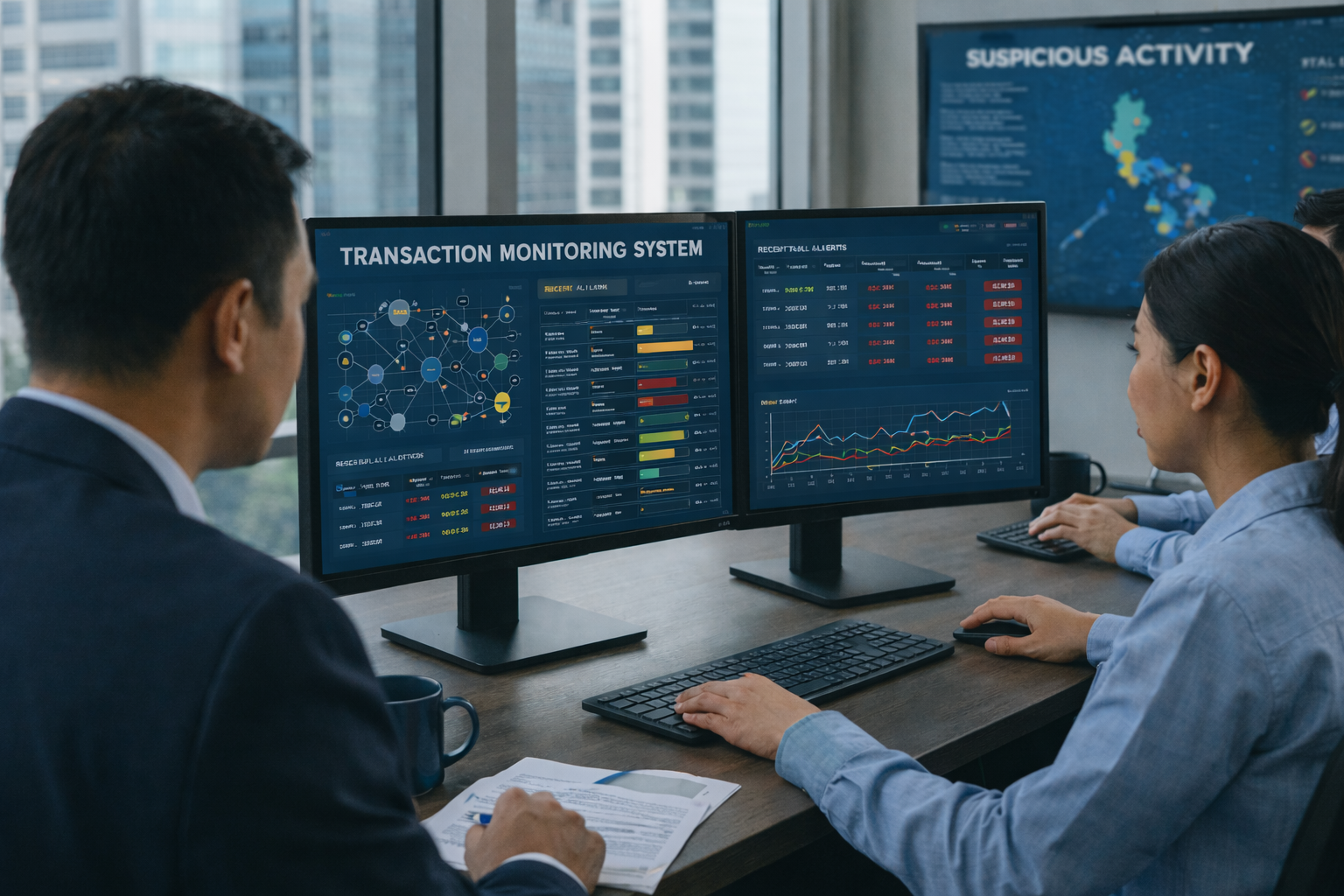Understanding Fraud Detection and Prevention in Banking
.svg)
In today's rapidly advancing digital landscape, bank transaction fraud detection has become a critical priority for financial institutions. As cybercriminals employ increasingly sophisticated methods, the urgency for robust fraud detection and prevention mechanisms intensifies.
Recent data from the Federal Trade Commission (FTC) reveals that consumers reported losses exceeding $10 billion to fraud in 2023, marking a significant 14% increase from the previous year. This surge underscores the escalating threat landscape that banks must navigate.
The financial repercussions for banks are substantial. According to a recent survey from a reputed analytics firm, for every dollar lost to fraud, financial institutions incur an average cost of $4.41. These costs encompass not only the immediate financial losses but also expenses related to legal actions, investigations, and recovery efforts.
Beyond the monetary impact, fraud incidents severely damage a bank's reputation, eroding customer trust and potentially leading to decreased customer retention and acquisition. This dual threat of financial loss and reputational harm highlights the imperative for banks to implement advanced bank transaction fraud detection systems.
Understanding and addressing the complexities of fraud detection and prevention is not merely an operational necessity but a strategic imperative. By adopting proactive measures and leveraging advanced technologies, financial institutions can safeguard their assets and maintain the trust of their clientele.
What is Fraud Prevention in Banks?
Fraud prevention in banking is a multi-layered approach aimed at detecting, mitigating, and preventing financial crimes before they can cause significant damage. As fraudsters continue to refine their techniques, bank transaction fraud detection has evolved into a sophisticated ecosystem that integrates advanced analytics, real-time monitoring, and AI-driven risk assessment to combat financial fraud effectively.
Modern fraud prevention strategies go beyond just reactive measures. Banks leverage proactive threat detection mechanisms that utilise:
✔ Transaction Monitoring & Anomaly Detection – Identifies suspicious transaction patterns and deviations from typical customer behaviour in real-time.
✔ Behavioural Analytics – Examines customer habits, login patterns, and spending behaviour to flag potential account takeovers and synthetic identity fraud.
✔ Machine Learning & AI – Continuously learns from past fraud incidents to detect emerging threats and improve fraud detection accuracy.
✔ Multi-Factor Authentication (MFA) & Biometric Verification – Enhances account security by requiring additional layers of verification beyond passwords.
{{cta-first}}
Common fraud tactics include identity theft, account takeovers, card-not-present fraud, and synthetic identity fraud, which exploit weaknesses in financial security systems. Without robust fraud prevention measures, financial institutions remain highly vulnerable to these evolving threats.
Fraud prevention isn’t just about detecting ongoing fraud—it also anticipates potential risks before they occur. By using predictive analytics and AI-driven risk assessment, banks can identify anomalies within vast datasets, uncover hidden fraud patterns, and proactively prevent fraudulent schemes before they escalate into large-scale financial losses.
As fraud tactics grow more sophisticated, the role of technology-driven fraud detection solutions has never been more critical in maintaining the security and integrity of banking transactions.
Importance of Fraud Detection and Prevention in Banking
Fraud detection and prevention are not just about protecting individual banks—they are fundamental to maintaining the integrity and trustworthiness of the entire financial system. With financial crimes becoming more sophisticated, robust fraud detection mechanisms are now a necessity rather than an option.
🔹 Customer Trust and Confidence
Customers are more aware than ever of financial fraud risks, and trust is the backbone of banking relationships. Financial institutions that quickly identify and address fraudulent transactions not only safeguard customer assets but also reinforce customer confidence. When a bank proactively prevents fraud, it sends a strong message: “Your security is our priority.”
🔹 Financial and Operational Impact on Banks
Fraud doesn’t just lead to monetary losses—it creates massive operational and compliance burdens. Studies show that for every $1 lost to fraud, banks incur an additional $4 in related expenses, including:
✔ Operational disruptions – Fraud investigations and customer claims require extensive resources.
✔ Legal and regulatory penalties – Banks failing to detect fraud risk hefty fines and compliance scrutiny.
✔ Customer compensation – Fraud-related customer losses often require reimbursement, further increasing costs.
An efficient fraud detection system mitigates these risks, allowing banks to avoid financial penalties, reduce operational burdens, and enhance long-term profitability.
🔹 Reputation Management: A Critical Business Asset
A single fraud-related scandal can cause lasting damage to a bank’s reputation. Customers are more likely to trust institutions that invest in proactive fraud detection strategies. Banks that fail to prevent fraud face:
✔ Loss of customer confidence – Security concerns push customers towards more secure competitors.
✔ Brand damage – Public perception can take years to recover from a major fraud incident.
✔ Increased regulatory scrutiny – Banks with weak fraud controls face stricter oversight and potential sanctions.
By demonstrating a strong commitment to fraud prevention, banks not only protect their customers but also their reputation and competitive edge in the market.
🔹 Regulatory Compliance & Ethical Responsibility
With fraud threats increasing, global regulators have tightened AML and fraud prevention requirements. Banks must comply with evolving regulatory frameworks or risk penalties. Implementing strong fraud detection and prevention systems is no longer just a best practice—it’s a compliance necessity.
A proactive fraud prevention approach ensures that financial institutions:
✔ Stay compliant with global AML, CFT, and KYC regulations.
✔ Avoid costly fines and regulatory investigations.
✔ Demonstrate ethical responsibility, enhancing trust with regulators, customers, and stakeholders.

Most Common Types of Financial Crimes in Banking
Financial crimes in banking have become increasingly sophisticated, with fraudsters constantly adapting to new technologies and security measures. Understanding these threats is the first step towards effective fraud prevention. Below are the most prevalent types of financial crimes that banks must guard against:
1. Identity Theft
🔹 Unauthorised use of personal information (e.g., social security numbers, banking details) to commit fraud.
🔹 Fraudsters create fake identities to open bank accounts, apply for credit, or conduct unauthorised transactions.
🔹 Impact: Victims suffer financial losses, damaged credit scores, and identity restoration challenges.
2. Credit Card Fraud:
🔹 Criminals gain access to credit card information and conduct unauthorised transactions.
🔹 Techniques include skimming devices at ATMs, phishing scams, and data breaches.
🔹 Impact: Loss of funds, chargebacks, and reputational damage to financial institutions.
3. Account Takeover:
🔹 Fraudsters gain control over a customer's financial account to manipulate funds or conduct illegal transactions.
🔹 Techniques include phishing emails, malware, SIM swapping, and exploiting weak security credentials.
🔹 Impact: Complete loss of customer funds and breach of sensitive banking information.
4. Phishing and Spoofing:
🔹 Fraudsters send fake emails, messages, or websites impersonating legitimate institutions to steal sensitive information.
🔹 Spoofing involves creating fake banking websites and caller IDs to deceive customers.
🔹 Impact: Stolen personal credentials, fraudulent fund transfers, and compromised financial security.
5. Check Fraud:
🔹 Altering or forging checks to conduct unauthorised transactions.
🔹 Fraudsters engage in counterfeit check creation, check washing, or kiting schemes.
🔹 Impact: Significant financial losses for businesses and banks.
6. Wire Fraud:
🔹 Fraud committed via electronic fund transfers, often by impersonating a legitimate entity.
🔹 Common methods include business email compromise (BEC), investment scams, and advance-fee fraud.
🔹 Impact: Large financial losses due to irreversible wire transfers.
7. ATM Skimming:
🔹 Installation of devices on ATMs to steal card data during legitimate transactions.
🔹 Fraudsters use stolen data to create cloned cards or withdraw cash illegally.
🔹 Impact: Direct financial losses and compromised card security for customers.
8. Insider Fraud:
🔹 Fraud conducted by employees or insiders who misuse access to banking systems for personal gain.
🔹 Includes embezzlement, unauthorised fund transfers, and manipulation of internal controls.
🔹 Impact: Major operational and reputational damage to financial institutions.
9. Loan Fraud:
🔹 Fraudsters provide false financial information or stolen identities to obtain loans.
🔹 Common in mortgage fraud, personal loan fraud, and business loan scams.
🔹 Impact: Losses due to non-repayment and misallocation of credit.
10. Mobile Banking Fraud:
🔹 Exploitation of mobile banking platforms through malware, unauthorised access, or credential theft.
🔹 Includes fake banking apps, SIM swap fraud, and mobile phishing scams.
🔹 Impact: Loss of customer funds and a rise in digital banking vulnerabilities.
How Do Banks Detect Fraud?
Banks use a strong and flexible strategy to find and stop fraud. They combine human skills with advanced technology. This approach helps them build a strong defence against changing threats.
Keeping a close eye on transactions as they happen is a fundamental part of this method, allowing banks to monitor things in real-time. Advanced algorithms analyze transaction patterns, looking for anomalies or deviations from established norms. This analytical prowess allows banks to swiftly identify and flag potentially fraudulent activities.
Anomaly detection is another critical component, leveraging statistical models to identify patterns that deviate significantly from the expected behaviour. Behavioural analysis further enhances fraud detection by evaluating customer habits and identifying deviations that may indicate fraudulent actions.
Here’s an example of teamwork. The bank uses advanced computer programs. These programs identify unusual patterns in how customers spend their money. If a customer typically makes transactions within a certain geographic region and suddenly there's a transaction from a distant location, the system may flag it for further investigation. This proactive approach lets banks act quickly to stop possible fraud. It shows how well human intuition and technology work together in the fight against financial fraud.
Fraud Prevention Techniques in Banks
Fraud prevention techniques in banks encompass a multifaceted approach designed to protect financial institutions from a wide array of fraudulent activities. One of the main strategies is using advanced data analytics and machine learning. These tools can spot suspicious patterns in real-time.
By harnessing the power of artificial intelligence, banks can swiftly detect anomalies and flag potential threats, thereby mitigating the risk of fraud before it escalates. Additionally, banks are increasingly adopting multi-factor authentication processes to enhance security. This means using three things to keep information safe. First, there is something the user knows, like a password. Second, there is something the user has, such as a mobile device. Third, there is something the user is, like biometric data. This way, only authorised people can access sensitive information and accounts.
Another critical component of fraud prevention is the cultivation of a robust security culture within the bank itself. This involves regular training and awareness programs for both employees and customers to recognize and report potential threats. Employees are trained to spot red flags and are equipped with the necessary tools to respond to and manage incidents efficiently. Customers are educated on safe banking practices and are encouraged to stay informed about the latest fraud schemes.
Additionally, banks work closely with law enforcement and other financial institutions. They share information about new threats and tactics used by fraudsters. By fostering a proactive and informed community, banks can better safeguard their assets and uphold the trust placed in them by their clients.
Best Practices for Fraud Detection and Prevention in Banking
The effectiveness of fraud detection relies on robust best practices. Implementing a comprehensive fraud prevention framework involves continuous monitoring, regular risk assessments, and adaptive strategies to stay ahead of evolving threats.
1. Real-Time Monitoring:
Real-time transaction monitoring is a critical practice, serving not only as a compliance measure for Know Your Customer standards and Anti-Money Laundering laws but also as a robust strategy for detecting fraudulent activities.
2. Regular Risk Assessments:
Conducting regular and thorough risk assessments is fundamental. This involves evaluating emerging trends in fraud, assessing vulnerabilities in existing systems, and adapting strategies accordingly. Risk assessments provide the basis for refining and enhancing fraud detection protocols.
3. Adaptive Strategies:
Flexibility is paramount in the realm of fraud detection. Implementing adaptive strategies that evolve alongside emerging threats ensures that banks remain one step ahead. This may involve the integration of machine learning algorithms that learn from new patterns and continuously improve detection capabilities.
4. Customer Education and Awareness:
Teaching customers about new fraud schemes and sharing security best practices helps them take part in preventing fraud. Banks can provide regular updates on common scams and offer guidance on secure banking practices.
5. Multi-Layered Authentication:
Implementing multi-layered authentication protocols adds an extra layer of security. This may include biometric verification, two-factor authentication, or other advanced methods to ensure that access to accounts is granted only to authorised individuals.
{{cta-ebook}}
Technologies Used for Fraud Detection and Prevention in Banking
Technological advancements have revolutionized fraud detection and prevention. Machine learning algorithms, artificial intelligence, and predictive analytics are pivotal in bank fraud investigations and detection.
In this technological landscape, Tookitaki has emerged as an innovative force, offering cutting-edge products designed to assist banks in combating fraudulent activities. Tookitaki's FinCense leverages advanced machine learning and AI technologies to provide a holistic and adaptive approach to fraud detection. Tookitaki's products help financial institutions stay ahead of fraudsters. They do this by analyzing patterns and adapting to new threats.
Final Thoughts
The fight against financial fraud is a constantly evolving battle—one that requires banks to stay proactive, adaptive, and technologically equipped. Fraud detection is no longer just about compliance; it’s about preserving customer trust, mitigating risks, and ensuring long-term institutional stability.
To effectively combat fraud, banks need to go beyond traditional detection methods and embrace AI-driven, real-time fraud prevention solutions. As fraudsters become more sophisticated, financial institutions must leverage advanced technologies like machine learning, predictive analytics, and collective intelligence to stay ahead.
Tookitaki is at the forefront of AI-powered anti-financial crime solutions, providing financial institutions with the tools to detect and prevent fraud with greater accuracy. Through its machine learning-driven AFC Ecosystem, Tookitaki empowers banks and fintechs to detect evolving fraud typologies, reduce false positives, and enhance operational efficiency.
🔹 Stay ahead of fraudsters with Tookitaki’s AI-driven fraud prevention solutions.
🔹 Protect customer assets, strengthen compliance, and safeguard reputations.
Experience the most intelligent AML and fraud prevention platform
Experience the most intelligent AML and fraud prevention platform
Experience the most intelligent AML and fraud prevention platform
Top AML Scenarios in ASEAN

The Role of AML Software in Compliance

The Role of AML Software in Compliance










